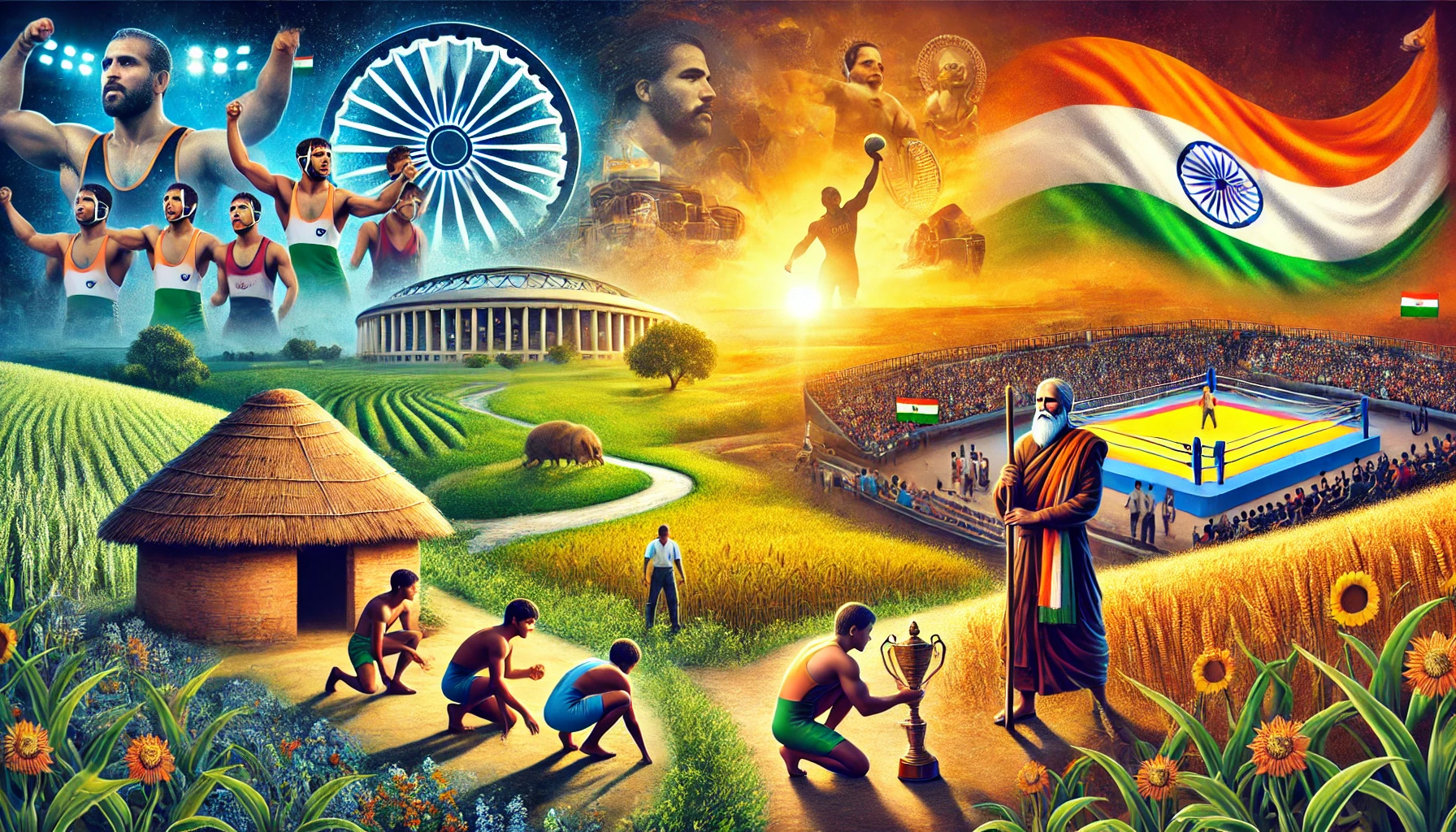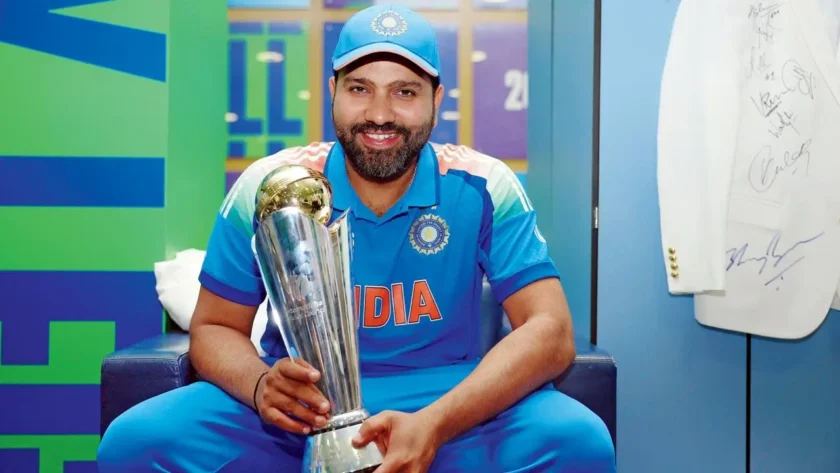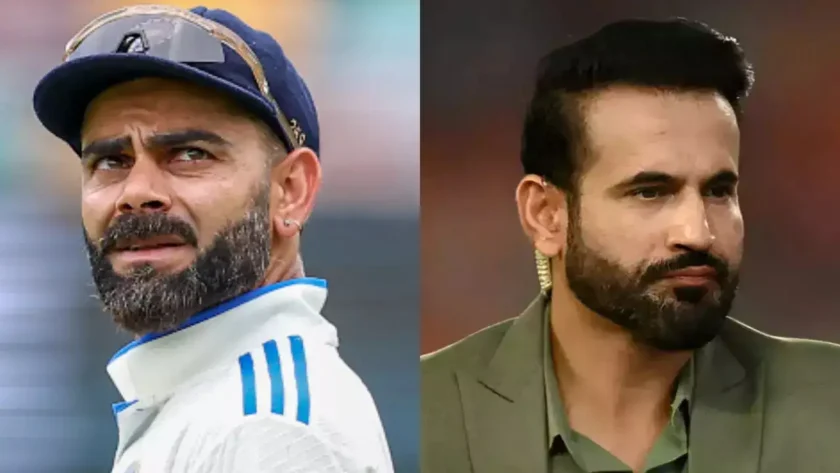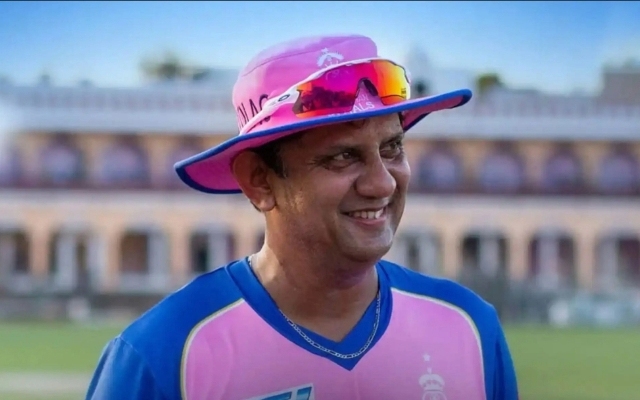Jind: India’s wrestling heritage is as old as its civilization, rooted deeply in its rural ethos. What began as a rustic sport in mud arenas, known as akhadas, has metamorphosed into a global phenomenon with Indian wrestlers now dominating international arenas. This transformation underscores India’s cultural evolution and the increasing global recognition of its sporting talent.
The Roots: Wrestling in Rural India
Wrestling in India traces its origins to ancient times, referenced in epics like the Mahabharata where Bhima and Duryodhana battled on mud arenas. In villages, wrestling was more than just a sport; it was a way of life. The guru-shishya parampara (teacher-disciple tradition) governed the akhadas, where aspiring wrestlers underwent rigorous training, learned discipline, and followed a strict diet regimen known as the pehelwan ka khana, often rich in milk, ghee, and almonds.
The akhadas were not just training centers but also cultural hubs, instilling values of resilience and sportsmanship. Wrestlers often performed for local audiences, making the sport accessible and deeply ingrained in the social fabric.
Transition to Organized Competitions
The colonial period introduced India to organized wrestling tournaments. During the British era, indigenous wrestling (also known as kushti) was showcased as a spectacle, blending traditional styles with emerging modern rules. Wrestlers like Gama Pehalwan, revered as the “Great Gama,” brought India global fame, defeating international champions and earning India respect in the wrestling domain.
Post-independence, wrestling became an essential part of national games, with state-sponsored events and wrestling federations promoting the sport. The Wrestling Federation of India (WFI), established in 1958, played a pivotal role in streamlining the sport, creating opportunities for rural talent to compete on national and international stages.
Modern Revolution: Entry into the Olympic Arena
India’s journey in modern wrestling gained significant traction with its Olympic debut in 1952. Khashaba Dadasaheb Jadhav’s bronze medal at the Helsinki Games marked India’s first step towards international success in freestyle wrestling.
Since then, wrestlers from humble backgrounds have continued to rise, carrying the legacy of rural akhadas into professional arenas. The establishment of better training facilities, introduction of scientific coaching methods, and collaboration with international experts have elevated Indian wrestling to unprecedented heights.
The Rise of Hardcore Wrestlers
The 21st century marked a watershed moment in Indian wrestling with the emergence of wrestlers like Sushil Kumar, Yogeshwar Dutt, and Vinesh Phogat, who became household names. Sushil Kumar’s silver at the 2012 London Olympics and Yogeshwar Dutt’s bronze in the same event inspired a generation of wrestlers.
The Phogat family, immortalized by the Bollywood blockbuster Dangal, highlighted the role of women in wrestling. Geeta and Babita Phogat broke societal norms, proving that wrestling was not just a man’s domain. Their success paved the way for others like Sakshi Malik, who won India’s first-ever women’s wrestling Olympic medal in 2016.
The Role of Pro Wrestling and Media
The advent of professional wrestling leagues like the Pro Wrestling League (PWL) has further popularized the sport. By combining the glamour of professional entertainment with competitive wrestling, PWL has not only provided financial incentives but also brought the sport closer to urban audiences.
Media and cinema have also played a crucial role. Films like Dangal and Sultan have romanticized the struggles of wrestlers, inspiring young talent from diverse socio-economic backgrounds to take up the sport.
Challenges and the Roadblocks
Despite its successes, Indian wrestling faces several challenges. Poor infrastructure in rural areas, lack of proper facilities, and inadequate financial support have hindered the growth of grassroots talent. Many akhadas struggle to sustain themselves due to urbanization and dwindling interest in traditional sports.
Moreover, controversies like doping scandals and administrative inefficiencies have occasionally marred India’s reputation on the global stage. Wrestlers have also voiced concerns about lack of transparency in selection processes and inadequate representation in decision-making bodies.

Wrestling on the Global Stage
Indian wrestlers have begun leaving an indelible mark on the world stage. Stars like Bajrang Punia, Ravi Kumar Dahiya, and Anshu Malik have emerged as global contenders, winning medals at World Championships, Commonwealth Games, and the Asian Games.
Bajrang Punia, a product of Haryana’s wrestling culture, has become a symbol of grit and determination, winning numerous international accolades, including an Olympic bronze in Tokyo 2020. Ravi Kumar Dahiya’s silver in the same Olympics was another testament to India’s rising stature in wrestling.
India’s growing dominance is also evident in its performances at global tournaments. Indian wrestlers now consistently rank among the world’s best, challenging traditional powerhouses like Russia, Iran, and the United States.
The Role of Women Wrestlers
Women wrestlers are redefining India’s narrative on wrestling. From being largely excluded in earlier times, women wrestlers now dominate headlines. The Phogat sisters, Sakshi Malik, and upcoming stars like Sonam Malik and Anshu Malik symbolize the changing dynamics of Indian society, where women are breaking barriers and excelling in fields traditionally dominated by men.
The success of women wrestlers has also led to increased participation at the grassroots level, with more young girls joining akhadas and benefiting from government initiatives promoting female athletes.
Government and Private Sector Support
Government schemes like Khelo India and support from private entities have played a vital role in nurturing talent. Sponsorships, training camps, and exposure to international events have equipped Indian wrestlers with the tools to compete at the highest level.
The Target Olympic Podium Scheme (TOPS), launched by the Indian government, has been instrumental in providing financial assistance, world-class coaching, and medical support to elite athletes.
Wrestling as a Catalyst for Social Change
Wrestling has transcended its role as a sport, becoming a catalyst for social change in rural India. It has provided a platform for marginalized communities, breaking caste and gender barriers. Many wrestlers come from economically disadvantaged backgrounds, and their success stories inspire millions to believe in the power of hard work and perseverance.
Future Prospects: From Mud to Mats to Stardom
The future of Indian wrestling looks promising. With sustained efforts to improve infrastructure, enhance coaching standards, and promote gender equality, India can aim for greater success at the Olympics and World Championships.
Moreover, the increasing popularity of mixed martial arts (MMA) and Indian representation in global platforms like the Ultimate Fighting Championship (UFC) signify new opportunities for wrestlers to transition into other combat sports.
India’s wrestling journey, from rural akhadas to international arenas, is a testament to the resilience and dedication of its athletes. It reflects the transformation of a sport deeply rooted in tradition into a modern, global phenomenon.
As India continues to make its mark on the wrestling world, the stories of its wrestlers remind us that greatness often begins in the humblest of places. With the right support, the next chapter of Indian wrestling will likely be even more glorious, inspiring generations to come.






